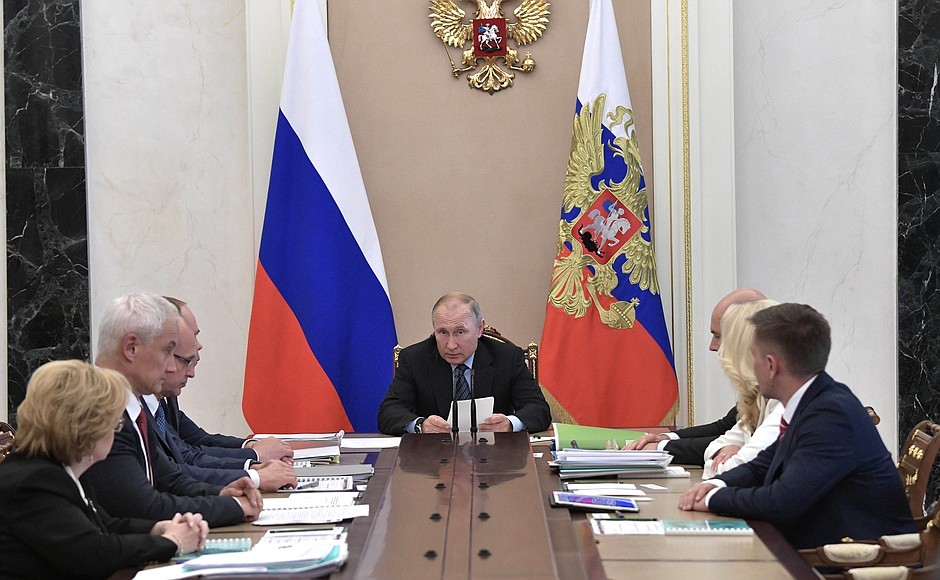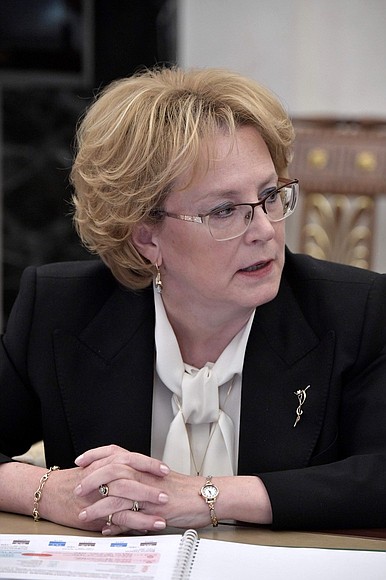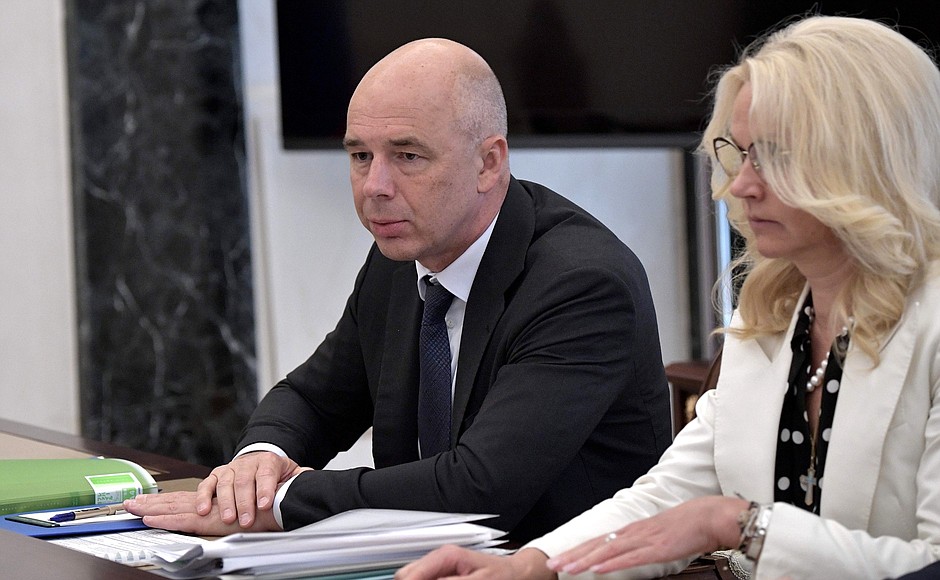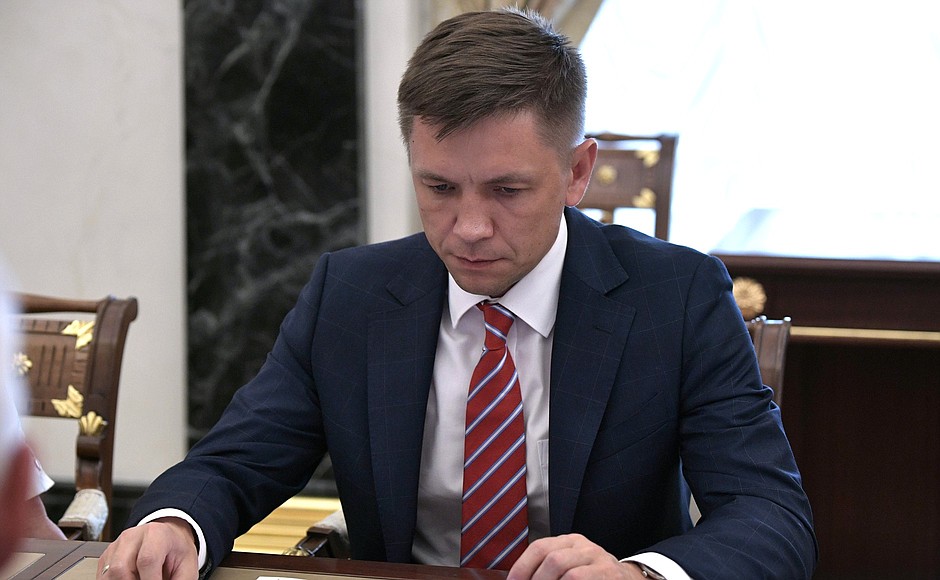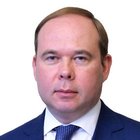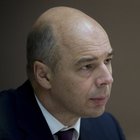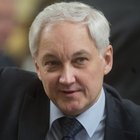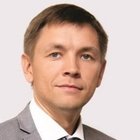The meeting was attended by Chief of Staff of the Presidential Executive Office Anton Vaino, First Deputy Chief of Staff of the Presidential Executive Office Sergei Kiriyenko, First Deputy Prime Minister – Finance Minister Anton Siluanov, Deputy Prime Minister Tatyana Golikova, Presidential Aide Andrei Belousov, Healthcare Minister Veronika Skvortsova and Minister of Digital Development, Communications and Mass Media Konstantin Noskov.
Healthcare Minister Veronika Skvortsova presented the main report on the status of primary healthcare in the country, including the infrastructure, personnel, and related legislation, and described the problems linked with the shortage of medical personnel, and the provision of housing and other social support for medical workers. The Minister made a number of proposals on improving primary healthcare.
***
President of Russia Vladimir Putin: Good afternoon, colleagues,
You are aware that some time ago Ms Golikova and I discussed primary care setting which is critically important for almost everyone in the country. Today, I want to go over this again in an expanded format.
See also
Of course, much has been planned and something is already being done as part of the Healthcare National Project. Let me remind you of the resources that we have allocated for this: a total of 1.367 trillion rubles. Of this amount, 237.5 billion rubles will be allocated, at least this amount was set aside, to two primary care programmes. These are significant resources that should be spent wisely and yield tangible results.
There are still many problems in this area. We are talking about the availability of medical care for residents of small towns and remote areas. As you may be aware, we plan to create and bring up to code rural paramedic centres and outpatient clinics, and to introduce innovative mobile medical centres and so on.
Particular attention should be paid to staffing. New models for the effective organisation of outpatient clinics are being developed. We have 60,216 of them, up a little compared with slightly over 58,000 in 2014.
However, 499 towns and villages with 100 to 2,000 people were not covered by primary care in 2018; all of them should be covered by 2021.
Of course, it has not been that long since the programme began, I know, and it’s premature to reach any conclusions yet. But we and you, those who are engaged in this work professionally, must know – and I am sure you know – that people are still not satisfied with the level and quality of primary care.
Patients still complain about poor conditions, long waiting lists to see medical specialists, and the shortage of such doctors. Medical workers, in turn, are unhappy with their wages and the high workload.
At this stage we need to thoroughly study the existing problems and find effective ways to resolve them.
So, today in primary care there is a shortage of more than 25,000 doctors – we have already talked about this – and more than 130,000 paramedics, paramedical personnel, and there are not enough medical specialists, as I mentioned. No less acute is the problem with the facilities and amenities and equipment at outpatient clinics and centres: to begin with, the buildings, for the most part built in Soviet times, have not been renovated or fully repaired – in any case, a significant number of them.
We have completed two phases of modernisation and the re-equipping of primary healthcare facilities, but of course, we could not have included 100 percent of healthcare facilities in these two phases. The equipment that we purchased in 2005–2006 is already outdated. Ambulances are also wearing out.
We are trying to ensure that people who need medical care know that their doctor, their nurse, or the administrator at reception are always on their side and will do everything that needs to be done – they will help, show the patient how to proceed and explain things so the patient actually receives the full range of medical services.
Modern society is open. People can see what wide possibilities modern medicine has, including in primary care, and they want all this to be available where they live. We need a system of incentives to motivate medical personnel to improve the quality of their work and meet the highest standards.
I am proposing today, once again, discussing the package of measures included in the Healthcare National Project, to see how this compares with people’s real expectations and needs. There really are a lot of improvements planned in the programme. There are plans to introduce high-tech and specialised treatment methods. But most people, most patients go to their primary care centre first – that’s where we must see that all our efforts and funding – huge amounts, frankly – that are allocated for the Healthcare National Project have reached each and every Russian.
<…>
Vladimir Putin: The problems are well known: depreciation of fixed assets of polyclinics, central regional hospitals and local hospitals, poor condition or lack of medical equipment in these settings as well as vehicles in many local hospitals, paramedic centres and outpatient clinics; lack of medical professionals in primary care facilities and, to put it mildly, an unsatisfactory track record of paying wages in the broadest sense of the word, considering that wages consist of fixed part, compensation and incentive payments. These are the problems.
We earmarked significant funding for the Healthcare National Project: 1.367 trillion rubles. While only 237.5 billion rubles from that amount have been allocated for primary care development under two programmes. What percent is this? 15, 16, 17 percent, while the main measures under the Healthcare programme primarily apply to specialised and tertiary medical care.
The mortality rate is also high in these areas. The general level of healthcare in Russia depends on the level of specialised and tertiary medical care. This is also true. However, last year there were 746.8 million visits for specialised care. There were 1.5 million visits, 3 million visits, and so on in different areas: 746.8 in total, while there were 1.2 billion visits to primary care facilities over the same period (2018), which is almost twice as much.
What am I trying to say? If primary care remains as it is today, the number of heart attacks and strokes will not decrease, because there is a breakdown in the primary care link of the chain, and this is the problem.
So, we certainly need to do more to improve primary care setting. Again, the federal centre did so twice expecting the regions to pick up the initiative, but it never happened.
In this regard, we need to look at how this work is organised. This is an obvious fact and an obvious truth. Of course, the regions have their own competence which needs our support, but something there is clearly not working properly. This needs our attention.
In this regard, I want the Healthcare Ministry and the Government, first, to analyse the entire system, the level and quality of how the payment of wages in primary care is organised. Nationwide, we seem to have achieved the benchmark target which is 200 percent of the average wage in a region’s economy, but this is far from the case everywhere. We are not even close to these numbers in small towns and villages. The data that I have and which come up whenever I talk to the people, such as during Direct Line, tell a different story. How fairly are compensations and incentives paid?
We need to take a closer look at these issues. So, I want the Government to draft the principles for upgrading primary care setting in the country by October 1.
Second, to initiate and organise the drafting of regional programmes to upgrade primary care in the regions. These programmes must be ready and defended no later than July 1, 2020.
Third, it is necessary to create mechanisms for monitoring the quality of these programmes.
And fourth, it is important to oversee their implementation and execution.
Finally, we need to work through and propose sources of federal financial support for all proposed activities. Please start working on this immediately.
<…>
